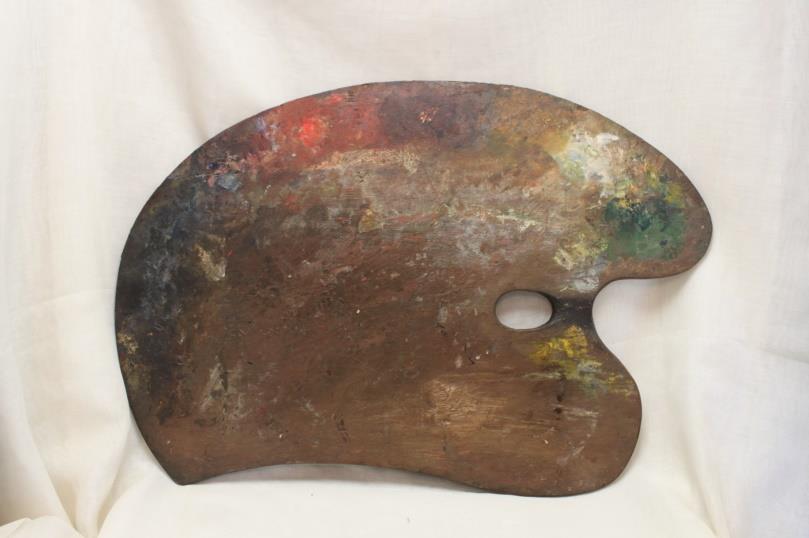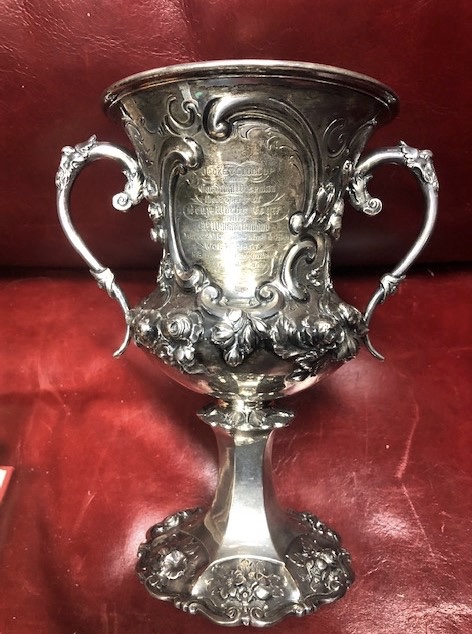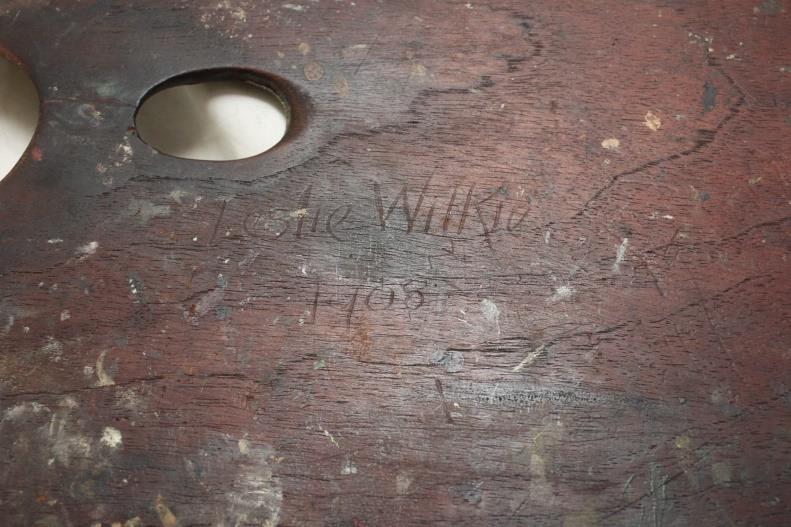
1
Leslie Wilkie’s artist’s palette 1908
Cedar, width 495 mm, height 330 mm
An artist’s palette is a thin, flat board that has a hole for the thumb at one end and is used by the painter to mix colours during painting. This cedar example has the artist’s name and date 1908 incised on the reverse.
Leslie Andrew Alexander Wilkie (1878–1936) was born in Melbourne where he attended the National Gallery schools 1896–1901 followed by two years study in Britain and Europe.
On his return he worked for the Age as an art critic and later for both the Argus and the Australasian. Wilkie was described as ‘a conscientious and careful painter of portraits, he painted in the tradition of the Royal Scottish Academy’ though he also painted still life and landscapes.
The artist’s name and date 1908 are incised on the reverse when he was acting master of drawing at the NGV (1907–1908) while Frederick McCubbin was overseas.
Wilkie was also a teacher, illustrator and curator. During WWI he painted banners for the Australian Red Cross.
In 1926 he was appointed curator (and later director) of the National Art Gallery of South Australia, now the Art Gallery of South Australia. In 1934 he joined an Adelaide anthropological expedition to Central Australia and painted portraits of Aborigines near Cooper Creek which were later exhibited in AGSA.
He is represented in numerous state and regional galleries including NLA and AWM.
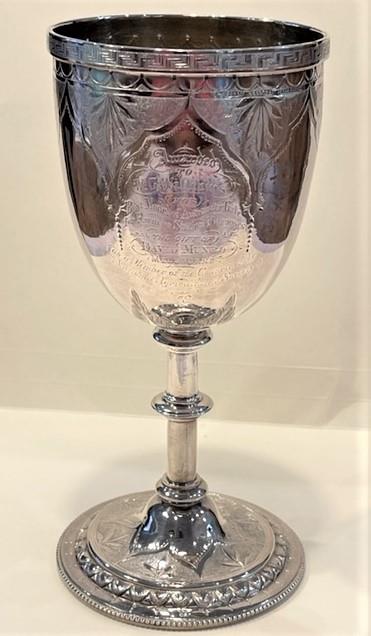
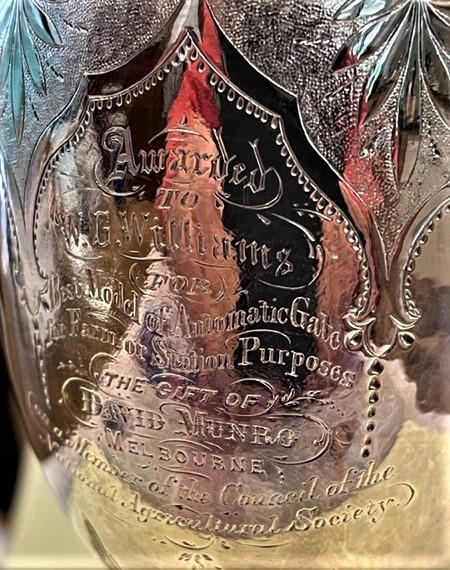
2
Silver Cup by E Fischer, Geelong presented by David Munro
Inscription: ‘Awarded to W.G. Williams for best model of Automatic Gate for Farm or Station purposes. The Gift of David Munro Melbourne, Member of the Council of the National Agricultural Society.’ Edward Fischer, Geelong, c 1879 Sterling silver, height 18.4 cm, diam of base 8.8 cm, diam of gilded bowl 8.5 cm, weight 221.3g
David Munro (1844–1898), engineer, speculator, and contractor, was born in Kirkintilloch, Dunbartonshire, Scotland, son of a blacksmith. The family and some close relatives migrated to Victoria in 1854 on the Tudor.
After working for his father for some years, he started his own engineering business. His trademark was a phoenix arising from the flames and his motto Resurgum. In the construction and railway boom of the 1870s and 1880s David Munro and Co. was one of the colony’s biggest employers of labour. Two of his best works still carry traffic across the Yarra: Queen’s Bridge built on the site of the old Falls bridge for £45,000 and opened in April 1890 and the new Princes Bridge built in 1888 for £137,000.
Munro sold every type of sawmilling, threshing and mining equipment, either for cash or on his new ‘Purchasing Lease System.’
His patented or improved machines were used by selectors and included a post-boring machine, the ‘Victory Self-adjusting Windmill’ and portable engines using ‘the colonial fire-box, the steam jacketed cylinder, the variable expansion gear, the sliding crank shaft bracket, the three-way force – pumps’.
This cup was presented at the Intercolonial Juvenile Industrial Exhibition, Melbourne, 1879/1880 in the section Class 1- Machinery of every description as follows: ‘W.G. Williams, Melbourne, model of automatic gate for farm, silver medal and silver cup, value £5,5s, the gift of Mr D Munro.’
Like many capitalists Munro was harsh on his employees and in the temporary slump of 1887 cut their wages from 7s. to 6s. 6d. a day. Unmoved by protests he told the men that their union leaders were ‘vermin to be squelched’.
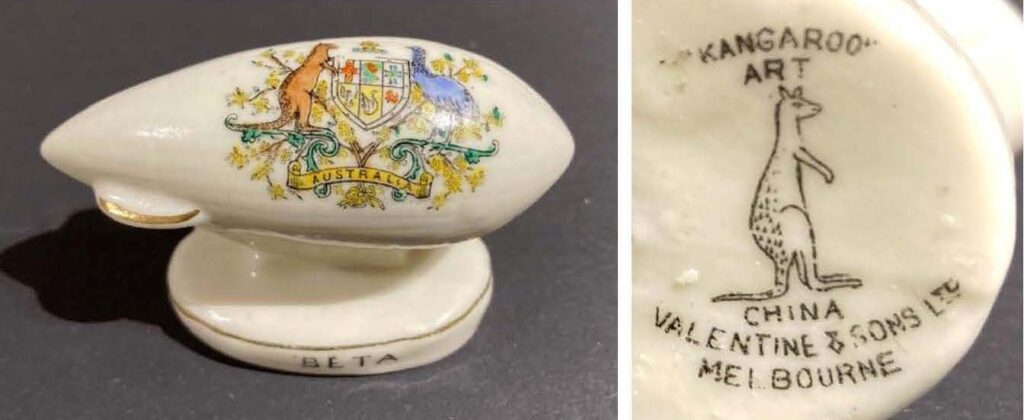
3
BETA Airship by Kangaroo Art
Crested china miniature BETA airship with the hand coloured 1912 Commonwealth Australian Coat of Arms, marked on base: ’Kangaroo” Art, China, Valentine & Sons Ltd, Melbourne. Length 8 cm, width 4 cm, height 6 cm
The BETA was a pre-WWI British non-rigid airship constructed by the Army Balloon Factory in 1910 with a rubberized fabric skin and was prone to accidents. It was followed by BETA II, with a new design ‘envelope’ of goldbeaters skin (processed animal gut skin gut membrane), with four bladed propellers and took part in 1912 manoeuvres.
It was later used by the Royal Naval Air as HMA 17. With a Clerget engine and a crew of three, the airship had a maximum speed of 35 mph, could reach an altitude of 400 feet and had an endurance of five hours.
After time doing air reconnaissance over enemy lines during WWI, she escorted ships across the English Channel and returned to Britain where she was used for preliminary training for all airship pilots. The BETA was retired in 1916.
Valentine & Sons Ltd Melbourne was originally known as a postcard company, founded in Dundee, Scotland in 1850.
It is very likely that the Melbourne company commissioned Willow Art of Longton, Staffordshire to produce these items, with hand-coloured transfer prints, to be sold under the Valentine name.
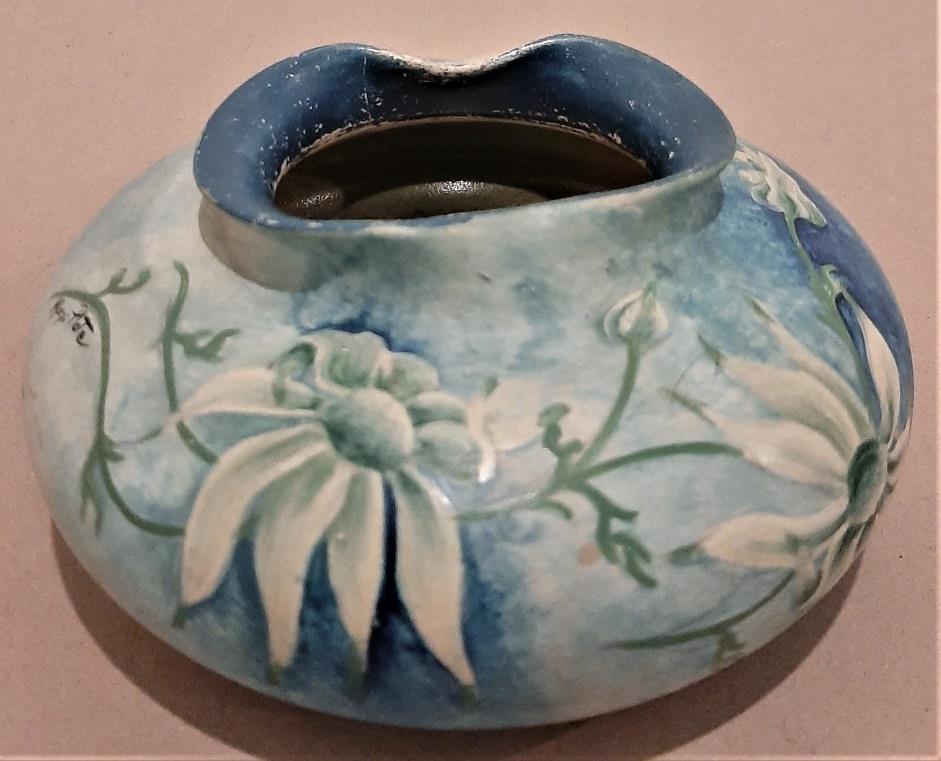
4
Margo Plate hand-painted pottery
Pottery bowl hand painted with flannel flowers, signed Margo Plate. Base marked Margo’s Pottery 26. Diameter 18 cm
Hettie Margaret (Margo) Lewers nee Plate (1908– 1978) was born in Perth, the daughter of German born grazier-artist Adolf Plate who died soon after the family returned to Sydney in 1914. She met her husband Gerald Lewers (1905-1962) at Antonio Dattilo-Rubbo’s evening art-classes in the late 1920s and they married in 1932. In 1934 they went overseas and enrolled at the Central School of Arts and Crafts, London. Gerald studied under John Skeaping and Margo worked at textile design, painting and drawing with John Farleigh.
On their return to Sydney in 1935, Margo set up her own studio printing textiles and made hand painted pottery; this piece probably dates from that period. Until 1939 she operated the Notanda Gallery, a fashionable interior decorating shop in Rowe Street. Her brother painter Carl Plate re-established the gallery in 1940, where he exhibited British and Australian modern art, and sold art books and posters.
Margo Lewers’ career continued to develop and she became one of the most influential figures in the Sydney art scene.
Lewers’ house in Emu Plains became a popular meeting place for the close modernist arts circle in NSW much like the Reeds’ Heide in Victoria. When Margo died in 1978 her daughters Darani and Tanya gave the family home to Penrith City Council on behalf of the local community as a heritage site and arts centre. Largely funded from the family’s construction, concrete and quarry business, Farley and Lewers, it was opened as The Lewers Bequest & Penrith Regional Gallery in 1981.
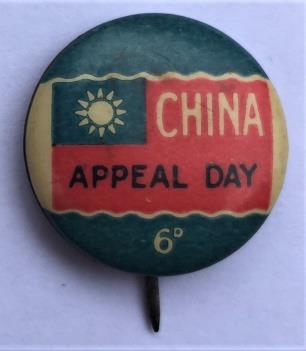
5
China Appeal Day 6d badge
Inscription: China Appeal Day 6d, maker unknown. Diameter 22 mm
Design: A red flag, with a white sun within a blue background in the left top corner.
On 12 December 1941 a joint China-Russia Carnival Appeal Day was held at King’s Cross NSW and was opened by the premier’s wife, Minnie May McKell.
Chinese, Russian, Czech and Estonian women dressed in national costumes sold 20,000 badges.
The event was a success and was described as Gala Christmas carnival.
This appears to be the only time an appeal was a joint event for both countries. Every year throughout the war except 1944, China Appeal Days were held. None of the badges seen is dated.
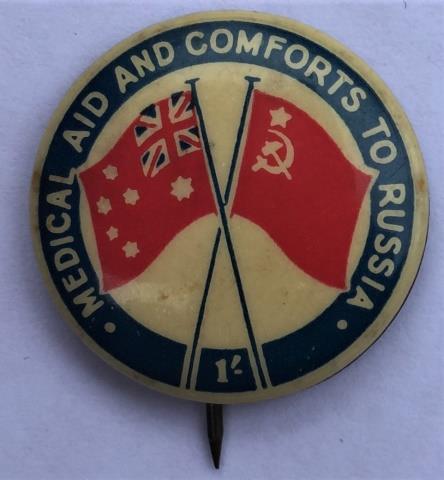
6
Medical Aid and Comforts to Russia Shilling Badge
Inscription: Medical and Comforts to Russia, maker unknown. Diameter 25 mm
The centre has an Australian red ensign and the Russian red flag with a hammer and sickle with a star above, around ‘MEDICAL AID AND COMFORTS TO RUSSIA’ (MACR). Maker unknown. 25 mm.
There was great sympathy in 1941 for Russians who were being attacked by Germans. The Australian government held a meeting with all mainland committees of the Australia-Soviet Friendship League to establish medical aid to Russia.
The Medical Aid and Comforts for Russia Committee was similar to the Red Cross. Some people were confused with that organisation with the ‘Aid to Russia Committee’ that had been established as an educational aid; to tell the people the truth about conditions in Russia, and the MACR often went to great length to explain the difference.
The MACR sent 19 bales of knitted comforts and 40,000 sheepskins by October 1942. By 1943 export of medical supplies were prohibited so the MACR focused on sending large knitted comforts (jumpers) and 40,000 sheepskins for soldiers of the Red Army.
There were a number of different types of MAR badges unfortunately none is dated.
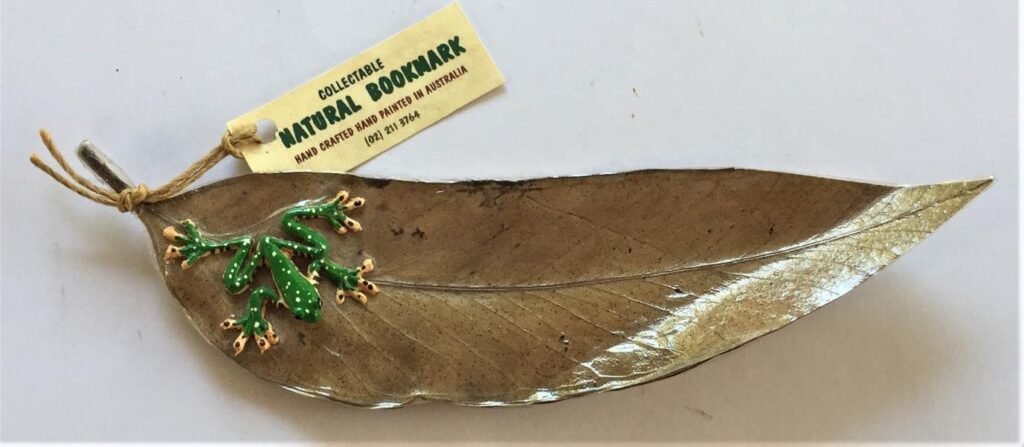
7
Hand-painted Gum Leaf bookmark
Gum leaf, length 21 cm
This novelty Australian bookmark is functional, attractive and interesting.
The frog is a native of South America. Why the Australian maker did not use an Australian species is rather surprising.
The text on the back of the card reveals that when the Leaf Folding Frog [Phyllomedusa tomopterna] is approached by a predator, this frog camouflages and leaps away.
The predator’s eye is drawn to its flash markings, then it lands and folds its legs again, leaving the confused predator looking for ‘Search Image’ which no longer exists.
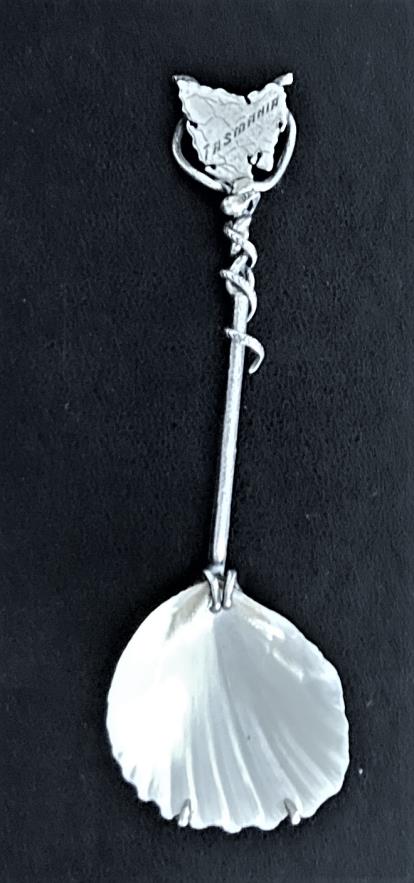
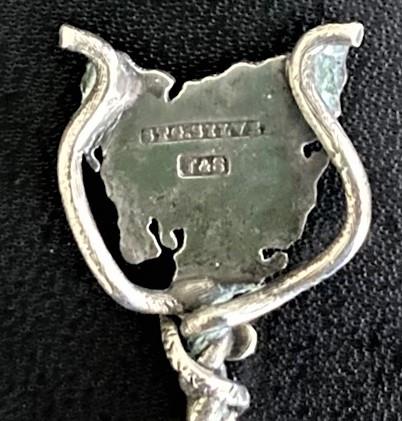
8
Taylor & Sharp Tasmania snake or tendril silver spoon
Engraved ‘Tasmania’, maker’s mark T & S, Stg Silver, length 12.5 cm
Taylor and Sharp were a substantial jewellery manufacturing, watchmaking and engraving business based in Hobart from 1894 into the 1950s. Their stock included ‘a choice assortment of diamond goods, modern designs in Art jewellery, Sterling Silverware, Novelties and the latest Melba bracelet’ (Advertisement in Hobart Mercury in January 1903).
From the description supplied by the owner, ‘the snake is held in place by its shape but is not actually attached and is slightly mobile’ may suggest that the snake is ‘an addition’ to a standard stock spoon sold by Taylor and Sharp.
Perhaps the addition of the snake was as a souvenir of a medical conference held in Tasmania or possibly a conference for herpetologists? There was a medical conference held in Hobart in February 1902 which discussed the formation of the Australian Medical Association. The AMA’s logo features a serpent wrapped around a staff – the symbol of Asclepius, the Greek god of medicine.
The Ancient Greeks regarded snakes as sacred and used them in healing rituals to honour Asclepius, as snake venom was thought to be remedial and their skin-shedding was viewed as a symbol of rebirth and renewal. It is a traditional symbol of medicine used by many medical organisations around the world.
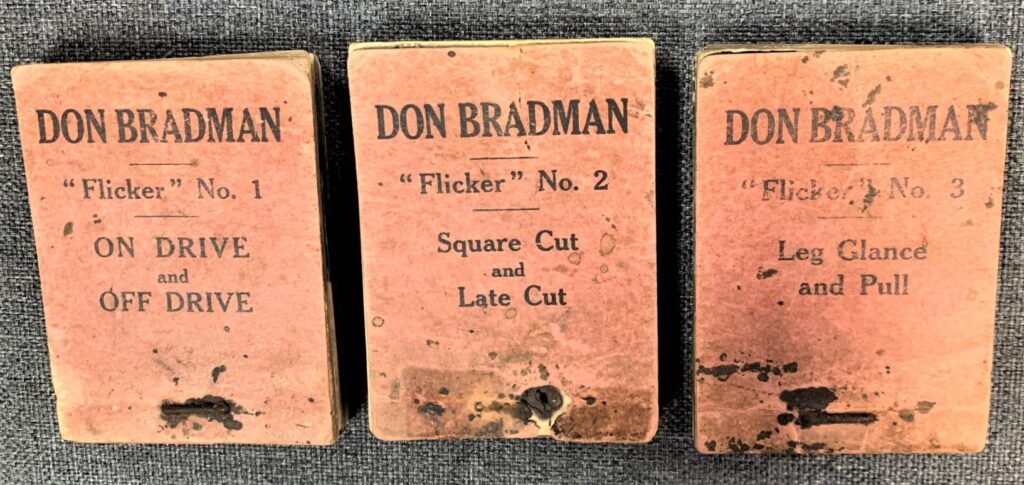
9
Don Bradman Flicker Books
Dimensions: 4.5 cm x 3.5 cm c 1930-1940s
These flicker books demonstrate five of Don Bradman’s famous cricket strokes, ‘On Drive’, ‘Off Drive’, ‘Square Cut’, ’Late Cut’ and ‘Leg Glance Pull’.
Each book contains a number of frame by frame photographs of The Don playing the stroke. When the book is ‘flicked’ it looks a little like a mini movie, demonstrating of the stroke for would-be cricketers.
Part of “The Don’ memorabilia, examples of the Flicker books are also in the Donald Bradman Museum in Bowral NSW. Some of the later examples were sponsored by the Gillette Co. as ‘Great the components Moments in Sport’.
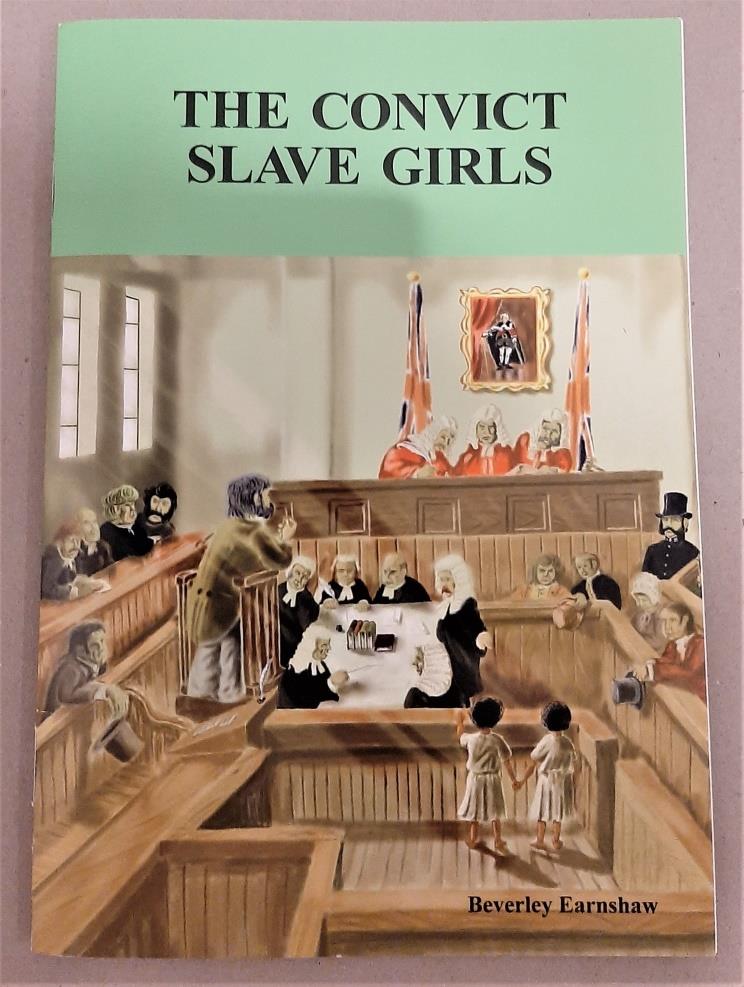
10
Sharing Australiana
The Convict Slave Girls by B Earnshaw
During the Australiana Society visit to Parramatta in June 2022, one member recognised a poster on the wall of the Lucas room in Hambledon Cottage concerning two convict slave girls from Mauritius (Ile de France), Constance and Elizabeth Sabloniere (the surname from the family who ‘owned’ them).
The guide had no further information. The member returned home, located a small book about Constance and Elizabeth and donated it to the Parramatta Factory Friends Society.
At the time when Mauritius was a British colony, the two needle workers age 11 and 9 were daughters of a female slave. They were accused of attempted murder of their mistress Madame Sabloniere. It turned out to have been an accident.
They had been asked to make a pot of tea for their mistress in the absence of the cook. Because they could not read, what they mistook for sugar was actually a poison.
They were transported to Sydney in 1833 on the two masted brig Dart and during the two-month voyage they were taught to read and to measure, useful skills for future dressmakers.
On arrival they were transported to the Female Factory in Parramatta where they were assigned to the sewing room and later released as dressmakers to the daughters of Colonel Henry Wilson, Superintendent of Police in Sydney.
Cooee
Call for Australiana Volunteers
We need 10 articles every 2 months
Tell us about your items: humble or valuable
Tell your children you answered the call in the hour of need! Do your Bit
Editorial Team
Peter Lane pnj.lane@bigpond.com Yvonne Barber ypbarber@hotmail.com
Consultants:
Bob Fredman- Furniture
Nicola Kissane all matters relating to Sewing.
To join the editorial team or submit an item for the VS&T Report, please contact Peter at pnj.lane@bigpond.com
